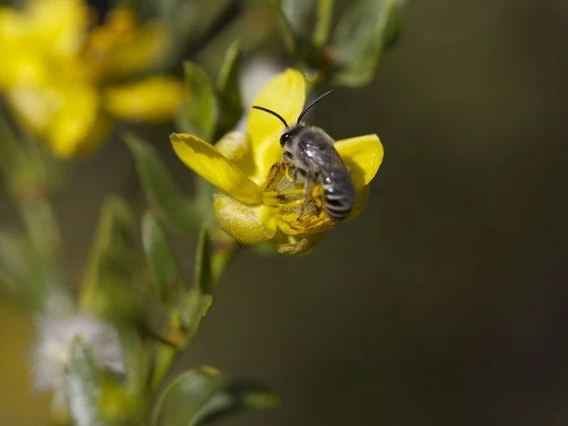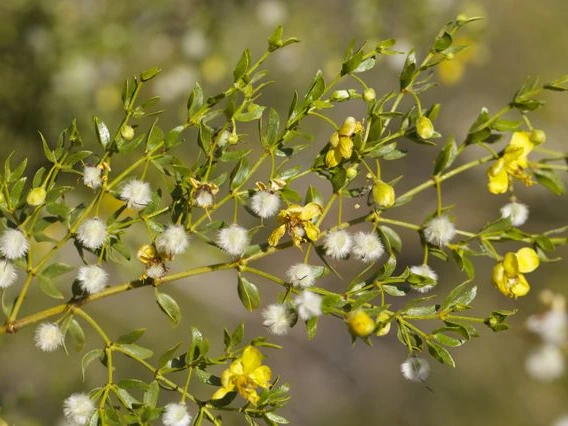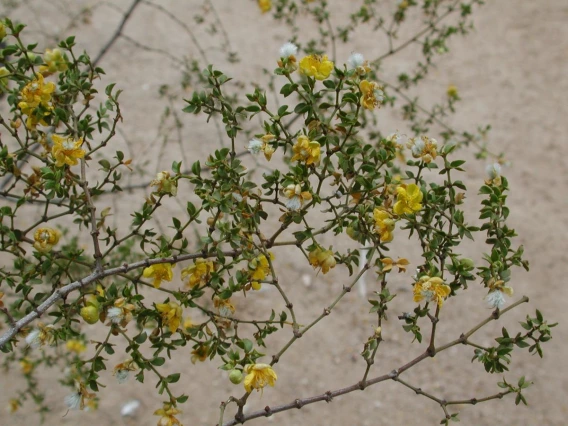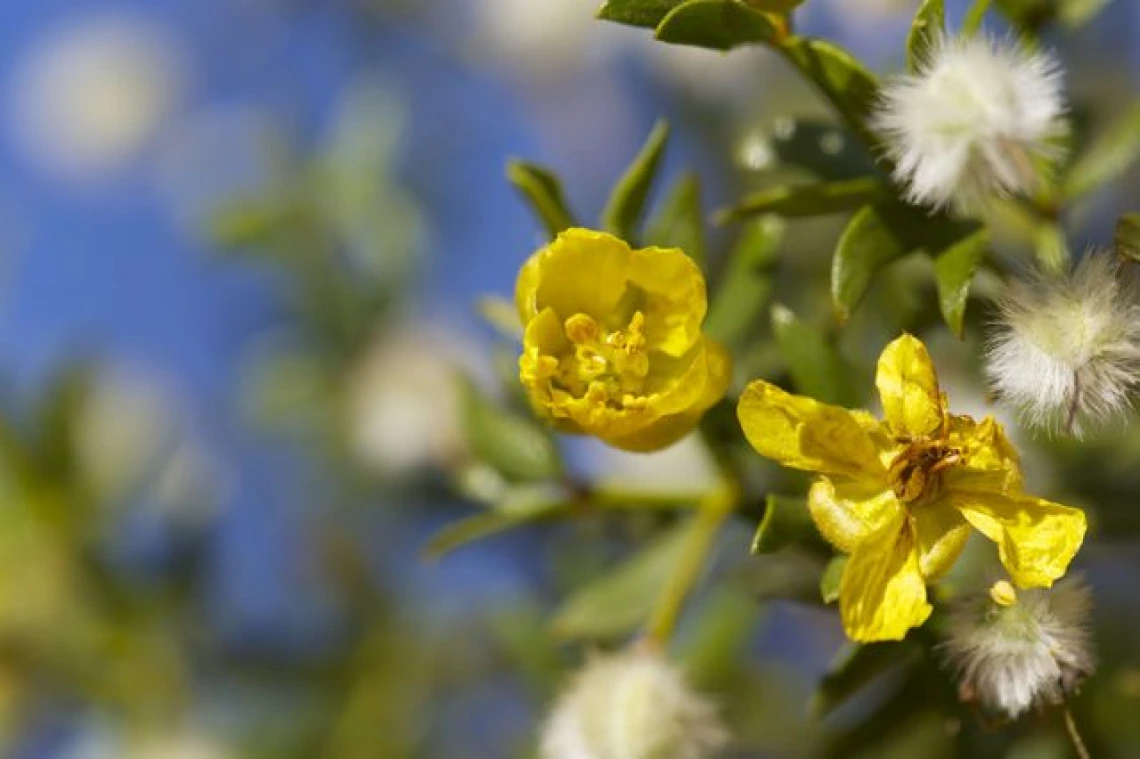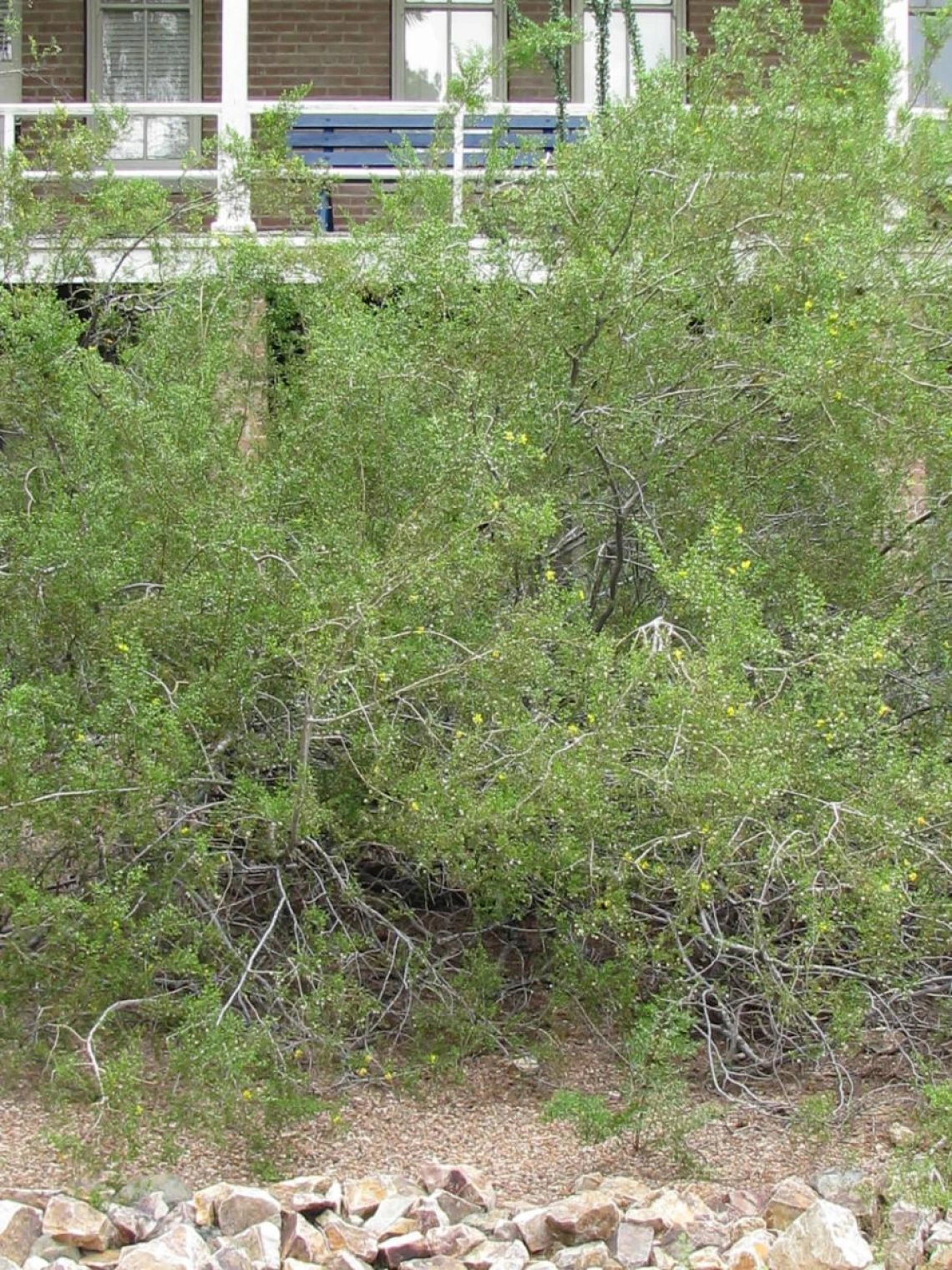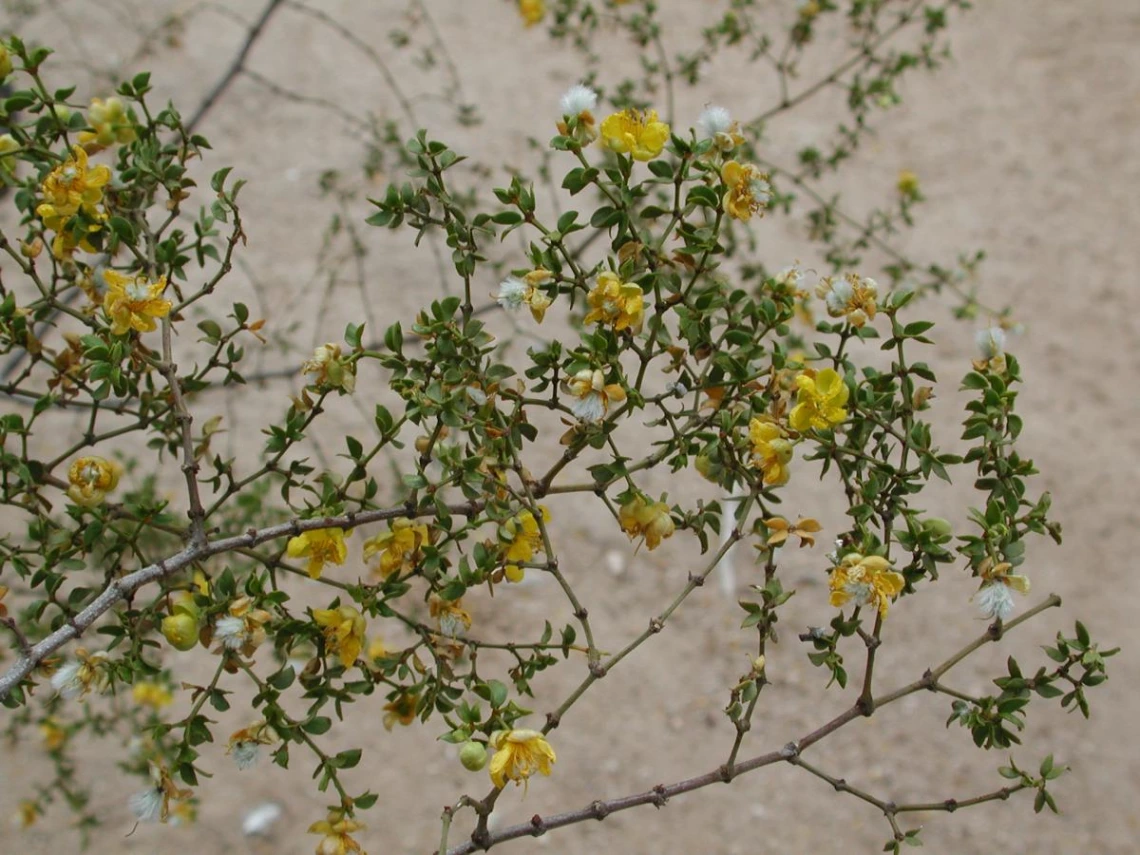Sonoran Native Plants Virtual Tour
Larrea tridentata | Zygophyllaceae | creosote
Desert Ecology:
The chemicals produced by this plant create a volatile fragrance after rainfall, which is described by desert-dwellers as “the smell of rain”. This evergreen shrub with small yellow flowers, produces a small , wooly fruit when pollinated by insects (especially bees). More than 22 species feed only on creosote flowers including the creosote grasshopper, and creosote katydid . The shrub often acts as a nurse plant for Echinocereus, Mammallaria, Peniocereus, Although all members of the species are drought tolerant, living for up to two years without rain, some have evolved changes in ploidy count (chromosome copy) which confers another level of evolutionary adaptation to different environmental conditions. This plant can clone itself by sending up satellite shoots cluster of new growth in the form of a “doughnut” sixteen meters in radius, and is estimated to be about 10,000 years old.
Ethnobotany:
The secondary metabolites and resins produced by this plant, caused many to refer to it as “greasewood” and for many native people to use it medicinally . Among these medicinal applications were treatment of smelly feet, infertility, tea for cold/sore throat/cough/fever/congestion, stomach problems, bowel regulation, tea from roots for ulcers, UTIs, herpes, shingles, rheumatism, arthritis, liver and kidney problems, fertility issues, paralysis, swelling, diabetes, tumors, cancer, painkiller, sanitizer, wound healing agent. It was also noted for its usefulness in treating nausea, menstrual cramps, intestinal discomfort, and dandruff . The Seri smoked galls formed by creosote gall midge like tobacco. Creosote is currently marketed as “chaparral tea” . The resin was also used as glue and for waterproofing.




